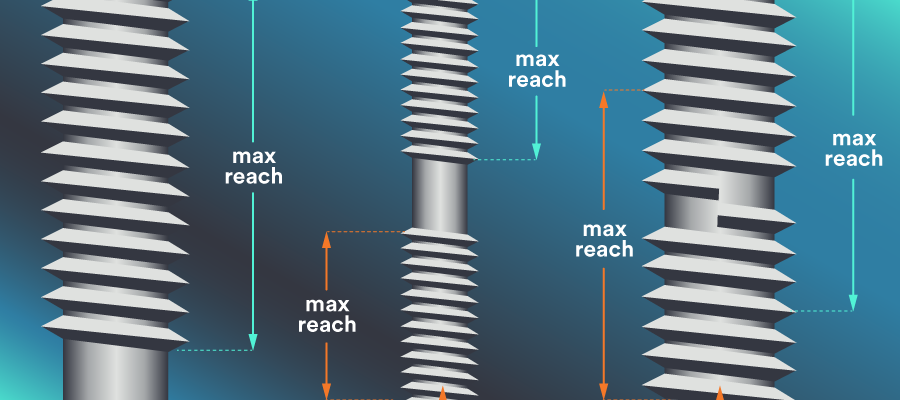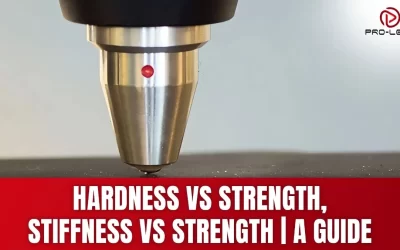Threading is a crucial process in manufacturing that involves creating a helical structure, known as a thread, on a workpiece. This technique is used to produce intricate components that are integral to a wide variety of applications.
Threaded components can provide a means of fastening, power transmission, and much more. For example, threaded fasteners like bolts, screws, and nuts hold objects together in the construction, automotive, and aerospace industries. Threaded pipes transport fluids like water, gas, and oil in plumbing. Threaded shafts transmit power and motion between different machinery components.
This article unravels the complexities of threading in manufacturing, discussing various methods, their applications, and how to ensure the creation of high-precision threads.
Threading: A Pivotal Process in Manufacturing

Threading holds a critical position in manufacturing due to its broad versatility and applicability across industries. The method is used to create both internal threads (threads cut into the surface of a bore or hole) and external threads (threads cut around a rod, cylinder, or shaft). These threaded components are intrinsic to many industries, including automotive, aerospace, construction, electronics, and more, where they contribute significantly to product design and functionality.
What are the different types of threads?
Threading is not a one-size-fits-all process. Depending on the application, different types of threads might be required, each bringing its unique characteristics and suitability. Here are some of the common types:
- Metric Threads: Utilized globally, metric threads are defined by their pitch (the distance between each thread) and diameter. They are employed in a wide range of applications due to their simplicity and universal acceptance.
- Unified Threads: These are used primarily in the United States and Canada. They include UNC (Unified National Coarse) and UNF (Unified National Fine) threads, each offering different strengths and applications.
- Whitworth Threads: Originating from the UK, Whitworth threads are characterized by their specific profile, with a 55° thread angle. These are often found in older British machinery and structures.
- Pipe Threads: Specifically designed for pipes and fittings, these threads ensure a tight seal for liquid or gas flow. They include NPT (National Pipe Tapered) and BSPT (British Standard Pipe Tapered) threads.
What are the applications of threading?
The versatility of threading allows it to serve various applications, including but not limited to:
| Application | Description |
|---|---|
| Fastening | Fastening is the most common application of threading, where components like bolts, nuts, screws, and studs are used to hold or secure objects together. |
| Power transmission | In machinery, threads—particularly on lead screws—are critical for converting rotational motion into linear motion, a fundamental aspect of CNC machines. |
| Fluid control | For piping systems, threaded valves, and fittings are integral to controlling the flow of liquids or gases. |
Threading Methods in Manufacturing
Creating threads involves a variety of techniques, each suited to different types of workpieces and threading requirements. One technique involves using a threading die to cut threads into the workpiece surface, while another involves using a thread milling cutter to create helical pattern threads. Additionally, there are techniques that involve tapping the threads into the workpiece, such as using a tap and die set or a thread-forming tap. Each of these techniques has its own advantages and disadvantages, depending on the material being threaded, the thread size, and the desired thread quality. It is important to choose the right technique for the job to ensure the best results.
1. Thread Cutting
Cutting is a widely adopted method for producing threads. It involves removing material from a workpiece using a cutting tool. This method can be further subdivided into single-point threading and multi-point threading.
- Single-point threading is typically used for precision threads. The process uses a single-point tool to cut the thread into the workpiece, which allows for high accuracy and flexibility in thread design.
- Multi-point threading, on the other hand, is used for high-volume production. This method uses a die with multiple cutting edges to form the threads, enabling faster production but less flexibility in thread design.
2. Thread Rolling
Thread rolling is a non-cutting process that creates threads through plastic deformation of the workpiece. The process utilizes hardened steel dies, matched to the thread profile, which are pressed onto the workpiece to form the threads. This method has several advantages:
- Strength: Rolled threads are stronger due to the cold working process, which aligns the material grains along the thread flanks, improving their load-bearing capacity.
- Speed: Thread rolling is faster than cutting because it’s a single-pass process that doesn’t require material removal.
- Surface Finish: Rolling produces a smooth, burnished surface that offers better resistance to wear and corrosion.
3. Thread Grinding
Grinding is another method used for thread creation, particularly for high-accuracy, high-hardness applications. It uses an abrasive wheel that matches the thread profile. Thread grinding is often used for:
- Hardened materials: Grinding is suitable for materials too hard to be cut by other methods.
- Special threads: It can create custom thread profiles and pitches that may not be feasible with other methods.
- High precision: Grinding can achieve very tight tolerances and excellent surface finishes.
CNC Threading: Precision and Efficiency
CNC threading has revolutionized the manufacturing industry by offering unparalleled precision, consistency, and efficiency in creating threads. By automating the threading process, CNC machines eliminate human error and increase productivity, making them ideal for both high-volume and high-precision applications.
CNC machines employ various operations to create threads, such as:
- CNC Turning: This operation is used for creating external threads. The CNC lathe rotates the workpiece while the cutting tool, programmed to move along the required helical path, creates the threads.
- CNC Milling: For internal threads, CNC milling machines utilize a rotating cutting tool (tap) that moves into the stationary workpiece to form the threads.
- CNC Grinding: CNC grinding machines can perform thread grinding, delivering high-precision threads in hard materials.
Programming for CNC threading
The precision of CNC threading is a crucial aspect that greatly depends on the accuracy of the programming. To achieve such precision, a thorough understanding of the thread parameters is necessary, including the thread type, diameter, pitch, and depth. Once these parameters are defined, they need to be accurately programmed into the CNC machine using either G-code or a CAD/CAM system.
The intricate program then controls the machine’s movements to ensure the creation of the exact thread required. It is worth noting that the process of programming the CNC machine requires not only technical expertise but also attention to detail, patience, and a deep understanding of the manufacturing industry’s best practices.
Conclusion
Threading is a cornerstone process in manufacturing, impacting industries far and wide. The advent of CNC threading has significantly enhanced this process, ensuring precision, consistency, and efficiency. By understanding the nuances of threading methods and their applications, manufacturers can harness the full potential of this indispensable technique.
By leveraging the power of CNC threading, manufacturers can meet the demands for precision and volume, making it an essential part of modern manufacturing processes. At Prolean, we are committed to providing high-quality and precise threading services. We stand as a reliable partner for your threading needs, offering services that align with your production goals and ensure success in the industry.
FAQs
What are the common methods used for threading in manufacturing?
Threading in manufacturing typically involves cutting, rolling, or grinding methods. Each method has its unique benefits and is suited to different applications and materials.
What is CNC threading, and how does it benefit the manufacturing process?
CNC threading involves using Computer Numerical Control machines to automate the threading process. It offers benefits such as high precision, consistency, and increased productivity.
What are some applications of threading in manufacturing?
Threading is used in a variety of applications, including fastening components, power transmission in machinery, and controlling fluid flow in piping systems, among others.
What are the different types of threads used in manufacturing?
There are several types of threads used in manufacturing, including metric threads, unified threads, Whitworth threads, and pipe threads. Each type has unique characteristics and is suitable for different applications.
What factors should be considered when selecting a threading method?
Factors to consider when selecting a threading method include the type and hardness of the material, the required precision and surface finish, the thread size and form, and the volume of production.




0 Comments